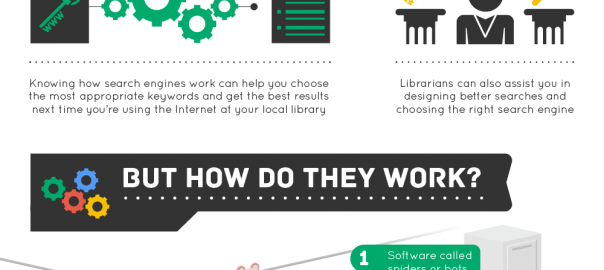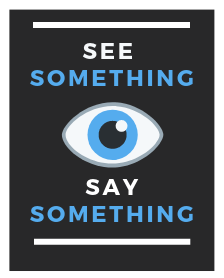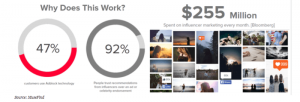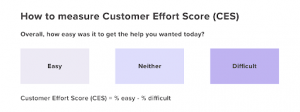In the world of internet marketing, we’ve all heard of Search Engine Optimization, and we all know we need it. Unfortunately, a lot of us don’t know exactly “how to do that SEO thing”, other than that it’s got “something to do with keywords and Google”. Trust me, those are two lines I’ve heard plenty of times before, and probably will again. However, while SEO can be an extremely complicated field to operate in, there are a couple of basic principles that can help marketers like you understand how to optimize landing pages to rank well in Google, Bing, and Yahoo alike.
So what exactly is Search Engine Optimization? To understand the answer to that question, first we have to ask another, and it’s the question that SEO itself is centered around: “How does Google decide what shows up on the first page when you search for something?”
The Science of Search
There’s a pretty good infographic about the science of search engines by USC Marshall that gives a fantastic visual of how Google’s crawlers (bots, spiders–whatever you want to call them) analyze websites’ titles, content, images, keywords, and links before indexing the pages. When you, the user, decide to search for, let’s say “cat beds”, Google refers back to this index and pulls up only the most relevant pages about cat beds. Pretty simple, right? The problem is that Google’s search engine results pages (SERPs) only list 10 results per page. There are way more than just 10 cat bed companies out there! So the next question becomes: “how do I get my cat beds to show up in the top 10 results?”
Ranking Factors
Unfortunately, nobody knows the exact answer to that one because it all centers around Google’s closely-guarded and ever-changing algorithm—but enough crazy people have gotten together to study this topic, and we have some pretty good indicators as to what will make a site and its pages rank better. According to University of Alabama Birmingham Collat School of Business, Google’s algorithms tend to favor pages that have:
- An appropriate number of keywords
- Content relevant to the search
- Content relevant to the user’s location
- More links pointing at them
As far as what’s on your page goes, the old-adage (repeat it with me if you already know it), “Content is King” holds true. Not only does whatever is on your page matter tremendously because of the keywords that it contains and how relevant it is to search intent and locations, but it also matters because it’s what will drive people to link to it. What’s awesome about these four things, however, is that you have direct control over almost all of them (the links thing can get tricky). Let’s dive deeper.
Keywords
So how do you choose your keywords? A lot of times they’ll appear naturally. If you sell cat beds, your primary keyword (or phrase, in this instance) is going to be a no-brainer: “cat beds”. Of course, “feline beds” would also be a great key phrase to try to rank for, as would be any other well-known synonyms for “cat beds”. In fact, Google takes into account these synonyms with newly integrated semantic search, so it helps to vary your language on your product whenever you can. It also helps to use Google’s Keyword Planner tool to check Global Monthly Search Volume for these terms, which is basically the estimated number of times the phrase is searched for around the world.

Is it my cat bed delivery?
While you may want to rank for your unique “Whipped Cream-Scented Zebra Print Cat beds”, you probably wouldn’t want to put too much time into optimizing for those keywords because nobody is searching that specifically for them (though a social campaign wouldn’t be too bad in this instance).
Density & Cannibalization
In the olden-days of Google, which is only about 15 years ago, the more keywords you had on your page, the better chance you had of ranking for them. Nowadays, not so much. To keep from keyword stuffing, Google will now penalize sites for over-optimization, meaning that you should keep your keyword density (the percentage of keywords to non-keywords on-page) to between 1-4%.
It’s also generally better to utilize only one landing/conversation page for a multitude of synonymous terms (“cat beds” and “feline beds” for example), as opposed to trying to get multiple pages that are essentially about the same thing to rank for synonymous terms. Your pages will end up inevitably cannibalizing each other and trying to outrank one another for the same terms. Don’t let that happen. Utilize the strength of one page to rank for a multitude of terms.
So Where Do I Put My Keywords?
While the most obvious place to include keywords is going to be in the body text of your content, there are a couple of other key places that your primary keyword should show up.
- URL structure–Most of the time a landing page is going to be located beyond the home page. If you’re selling cat beds on that page, you’ll want your URL to reflect that, both to Google’s crawlers and to human eyes.
* Good example: http://example.com/cat-beds/
* Bad example: http://example.com/xIjhweuo7372i2k93887?pageid=055894/
In the good example, we see that it’s short, concise, descriptive, and uses hyphens to separate words. The bad example is too long, not descriptive, and provides a bad user experience.
- Title Tags – The title of your page (signified by the element) should logically always contain your keywords, because the title of your page basically lets the reader know what your page will be about. It’s also one of the first places Google looks for the keywords you should be ranking for.
- Headers * – The headers below the title (signified by the <h1>,<h2>, and so forth elements) are also important places that Google is looking at when trying to return the most relevant searches. You should only be using one tag on any page, but you can feel free to use multiple tags as sub-headers.

- Alt Text – Whenever you place an image on your page, you should always be giving it an alt text. This is how you optimize the image itself as well as the page that it’s housed on to show up in Google Images. Always be aiming to add images to your pages that are relevant to the topic. You wouldn’t want a picture of a tractor trailer on a page that you’re trying to sell your cat bed on, would you?
- Meta Description – The meta description is the little bit of text you see on the SERPs that describes the result. For example, Pagewiz’s reads “Pagewiz Landing Pages for online marketeers – Create, Optimize, and Publish your landing pages. NO Programming or IT Necessary. Sign-up Today!” Honestly, it doesn’t matter if your keywords show up here for search purposes, because Google doesn’t use meta description as a ranking factor—but they do look at click-through rates. So if you show up for the term “Cat Bed”, but your meta description looks whacky, somebody might decide to click on the competitor. Every time someone does that, Google thinks more and more that they’re probably the more relevant result for that query. Keep your description concise (~155 characters) so that it doesn’t get truncated.
*While it’s important to try and get your primary keyword and its synonyms into your headers, it’s equally as important to remember not to keyword stuff your page!
Just Create Good Content!
This has always been Google’s stance from the start, as they want people to rank naturally and organically. In their eyes, great content is super descriptive, broken down into headers and sub headers, and uses a varied vocabulary to keep users engaged. Of course, they need a way to quantify that, and, as such, they use the algorithm.
Some will say that trying to game the algorithm is wrong, and I can agree to an extent; I believe that black hat methods hurt the internet and those that use it. What I can’t agree with is that we are doing something wrong when we try to make the internet a better place by providing the same description and variance that Google is asking for, exactly where they are asking for it.
No, there is nothing wrong with a well-optimized page. I’d argue that there’s more wrong with all of the pages polluting the internet that aren’t.
Which one is yours?
(245)
Report Post







